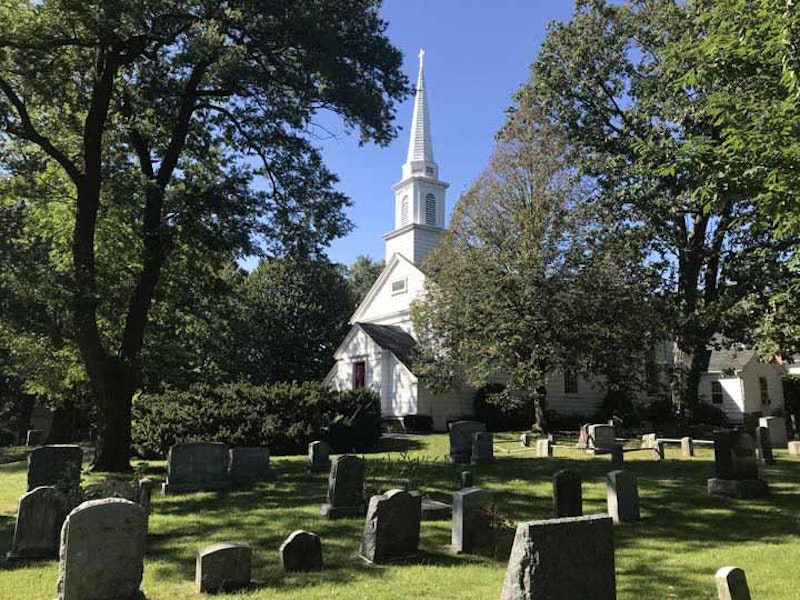I take pleasure from mundanities. I like where I live. For the first time out of anywhere I’ve lived, I can walk down to a body of water, at Virginia Point at the north end of Little Neck Parkway, though I have to brush away lots of weeds and branches to get there. And, though the Scobee Diner, which served as my website Forgotten New York’s home away from home, closed in 2010, there’s no shortage of nearby diners arrayed on Northern Blvd. like the North Shore, Bayside and Landmark. I can walk 10 minutes to a genuinely historic site.
On April 15, 1829, the leading men of the community of what became Little Neck’s adjoining neighborhood, Douglaston, drew up a document that announced their intention to build a church and later a school for the farming community.
Land was donated by a prominent local, Wynant Van Zandt, and the church began construction in 1830 on what was the highest land on the Van Zandt farm. Pastor Henry Beare arrived at Zion in 1842 and served the church for 50 years. It was his idea to name the area Douglaston for George Douglas, a regular in the Zion pews who purchased the property from Van Zandt. The original church burned down but the present church, built in the 1920s, is a near-exact copy, at Northern Blvd. just east of Douglaston Parkway, and its churchyard contains gravesites going back to the origin of the church. It’s a coup for me to have a quiet country churchyard to visit whether it’s on gray, snow-coated winter days or sunny days in July.
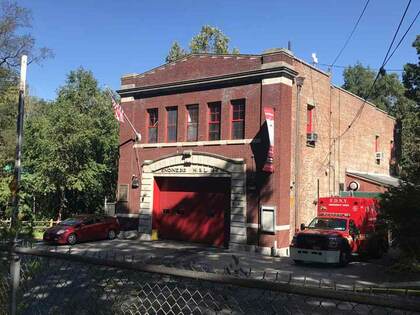
Facing the cemetery at 244th and Church Sts. is Engine 313/Hook & Ladder 164, which answers to fire and rescue necessities in Douglaston, Bayside and Little Neck. It was constructed in 1929, and most firehouses built from 1925-1935 look like this as a design template was used.
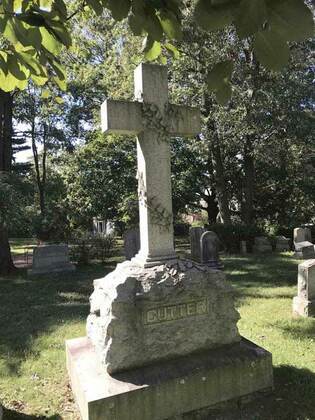
Little Neck’s early days featured a colorful character, the “Bard of Little Neck,” or “The Long Island Farmer Poet” Bloodgood Haviland Cutter (1817-1906), potato farmer, poet and acquaintance of Mark Twain, who immortalized him as the “Poet Lariat” in Innocents Abroad, a travelogue concerning his trip to the Holy Lands in the Middle East. Twain poked fun at Cutter as a master of doggerel who annoyed fellow passengers in the book.
Cutter self-printed many editions of his verse, which are little-read today. He owned numerous parcels of land in Little Neck, Great Neck, Manhasset and Plandome that he purchased or inherited. Cutter Mill Rd. in Great Neck, on the site of a mill he purchased from the Allen family (into which he married), is named for him, as well as a short half-block called Cutter Ave. When Cutter died in 1906 he left $750,000 of his fortune, much of it inherited, to the Long Island Bible Society and the rest was divided among 232 heirs. There are other Cutters buried in the plot, including his wife Emeline Allen Cutter.
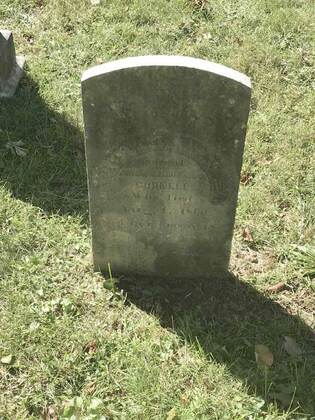
One of the many tombstones in the Zion churchyard belonging to a Cornell family member. Five generations of the Cornell family made their homes in Little Neck. They were descended from Quaker Richard Cornell, who’d come to Flushing from Rhode Island in 1643 and had received a land grant from the Dutch West India Company.
Samuel Cornell, born 1702, raised produce for Manhattan markets sending it by barge from the north end of the Old House Landing Rd., now Little Neck Parkway. A descendant of Samuel Cornell was Ezra Cornell, the founder of Cornell University. A short lane off Northern Blvd. east of Marathon Parkway is named for the family.
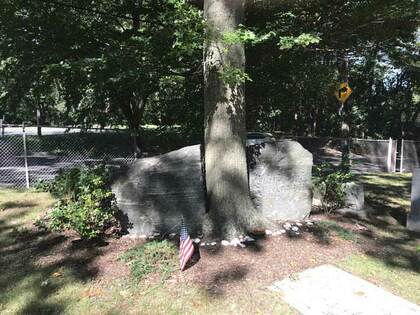
By 1636 Europeans had driven the Matinecoc(k) Indians, the area’s original settlers, out of the area along the North Shore east of Little Neck Bay called Madnan’s Neck after an Indian word meaning “place of fish.” Madnan’s Neck was subdivided into Little and Great Neck, after their relative sizes. Little Neck developed as a fishing village after the famed “Little Neck” clams were discovered in Little Neck Bay in the 1830s. But the bay was overfished and polluted after a few decades, though Little Neck Bay still has a lively recreational boating scene.
The Matinecoc Indians, a branch of the Algonquin group, had occupied the lands of eastern Queens for centuries before Europeans arrived. While the Matinecoc tribes gradually sold off their holdings to the Dutch and British in other parts of Long Island, giving the lands a peaceful transfer, Thomas Hicks (of the Hicks family that settled Hicksville) forcibly evicted the Matinecocs in Little Neck.
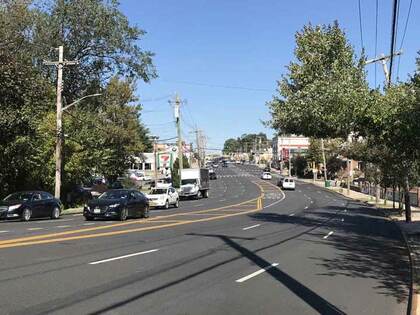
Much later, when the Flushing and Hempstead Turnpike, also known as Broadway and presently, Northern Blvd. was being graded and widened, the graves of the Matinecocs were discovered. They were reinterred in the Zion Episcopal Church cemetery in 1931. A stone marker, designed in two pieces on either side of a tree, is marked “Here Rest the Last of the Matinecoc.”
In 2015 the corner of Northern Blvd. and Marathon Parkway was named “Matinecock Way.” Some Native-American families still live in Little Neck, but some members claim they aren’t Matinecoc, as the linked article indicates.
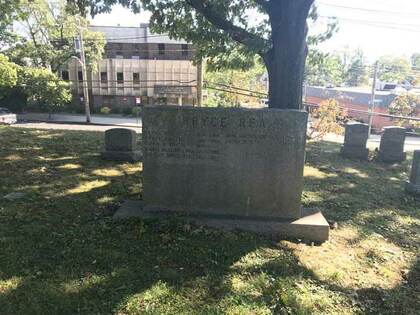
Generations of the Rea family, which originated in Ireland, have lived in Little Neck and Douglaston. The Bryce Rea real estate business remained on Northern Blvd. and Marathon Parkway until 2018.
—Kevin Walsh is the webmaster of the award-winning website Forgotten NY, and the author of the books Forgotten New York (HarperCollins, 2006) and also, with the Greater Astoria Historical Society, Forgotten Queens (Arcadia, 2013)

